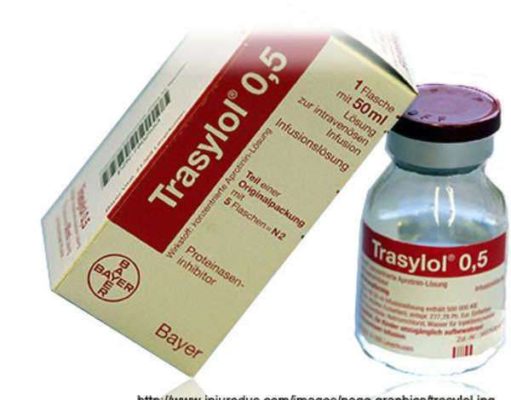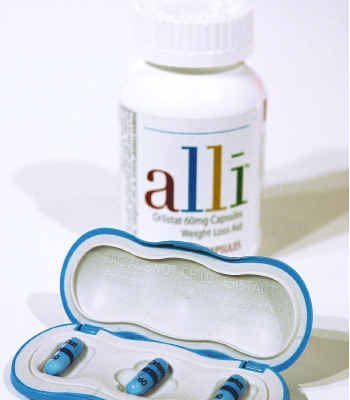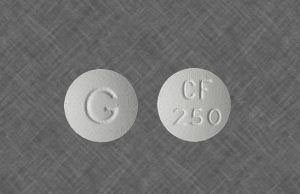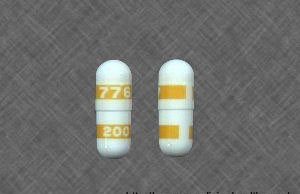Adipex Online
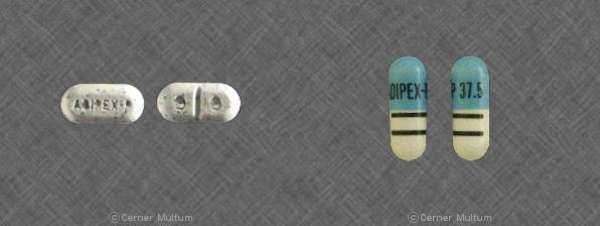
How to buy Adipex online
Designed to help morbidly obese people lose weight in combination with diet and exercise, the prescription medication Adipex can be expensive to purchase. Finding a legitimate source for the purchase of Adipex online is not a simple process. The bulk of online pharmacies are not legitimate or located overseas—both should be avoided. It is not advisable to try to buy Adipex online without guidance from your physician.
There are several reasons you may wish to purchase this drug over the internet. It may be possible to find a cheaper price for Adipex online than you are able to find in your area. It is important to find out how much your insurance policy will cover for use of this drug. Depending on your coverage, you may not have to worry about determining how to buy Adipex online.
If local pharmacies are too expensive or not readily accessible, you should consult with your physician about cheaper alternatives. A doctor may be able to recommend a reliable service for Adipex online. Pharmacies which sell medication over the internet should be registered with the National Association of Boards of Pharmacy. Any pharmacy which you are considering as a source to buy Adipex online should not sell you this medication without a prescription from a physician. Selling medication to those without a prescription is illegal.
Do not seek out Adipex online from pharmacies which are not based in the United States. Such businesses may not be legitimate. If you buy Adipex online from a pharmacy based in another country, you cannot be sure that you are receiving what you paid for. These companies are also not subject to American regulatory practices. Should you be harmed as the result of obtaining Adipex online from a foreign source, you are unlikely to be able to sue for compensation.
It is illegal to attempt to obtain this medication without a prescription. When you buy Adipex online without medical guidance, you risk your health as well as legal action. Taking this action is a criminal offense. Purchasing Adipex online without a prescription means you risk criminal prosecution if discovered. Additionally, you may be the victim of credit card fraud or unauthorized charges. If this is the case when you buy Adipex online without a prescription, you are unlikely to be able to take legal action to recover this money.
Patients who are harmed by treatment after the purchase of Adipex online may be able to sue for damages assuming they have followed a physician's guidelines. In the unlikely event that a legitimate provider has shipped defective or harmful medication, they can be sued for their negligence. However, the general target for a lawsuit stemming from harmful effects if you buy Adipex online will be the manufacturer of the drug.
In order to litigate over effects related to the purchase of Adipex online, you must maintain copies of all physician reports. These will be essential for a lawyer to demonstrate a direct link between adverse effects and your consumption of the drug.
Adipex Side Effects

A Brief Guide to Adipex Side Effects
Like any prescription medication, the use of the appetite suppressant Adipex must be carefully monitored to guard against adverse effects. The side effects of Adipex vary in severity. Contacting your medical doctor or healthcare provider is suggested if you notice any alterations in your normal bodily function following Apidex use.
One of the most dangerous Adipex side effects is addiction. Chemical reliance on Apidex, like the bulk of amphetamines, is a very real possibility. To help Apidex addiction, your doctor will question you about you family histories of drug abuse or addiction. If addiction history is present, your doctor will search for an alternative.
Some of the potential Adipex side effects are not unique to the drug. Reactions such as insomnia and nausea are common to several prescription medications. The side effects of Adipex may indicate that you may need to discontinue use; however, only a physician will determine whether your Apidex side effects warrant a termination of your prescription.
Other Adipex side effects are more serious and will require immediate medical attention. These serious Apidex side effects include serious mood swings, depression and heart palpitations. Serious Apidex side effects must be reported to a physician as soon as you observe them. Other serious side effects of Adipex include blurred vision and seizures.
The most serious potential side effects associated with Apidex are rare. Adipex side effects, including allergic reactions, are an immediate and serious threat to your health. The side effects of Adipex generally take the form of a rash or, in more extreme cases, hives. Additionally, Adipex side effects could result in increased blood pressure in your lungs, known as "pulmonary hypertension." This particular reaction can lead to potentially fatal consequences. Any alterations in your skin or heart rate will indicate serious side effects of Adipex.
If, after using Apidex, you notice any of the above side effects, you may opt to pursue compensation through civil litigation. You are unlikely to be successful in suing the drug's manufacturer over Adipex side effects without the guidance of a lawyer skilled in such litigation. Should you desire to obtain damages for a drug's negative consequences, gather your medical records and speak to a lawyer. Demonstrating direct cause and effect in such matters to the satisfaction of the law is complicated and too difficult for non-lawyers to do properly.
Roll Your Own

What is a Roll-Your-Own Cigarette?
A roll-your-own cigarette (RYO) is a cigarette that is made with loose tobacco and a rolling paper. RYO products often include a bag of loose tobacco, and these pouches sometimes come with rolling papers as well.
Some smokers preferred RYO products because they were cheaper and it allowed them to receive more nicotine than manufactured products on the market. However, the cost of these products has sky rocketed in since 2009 after President Obama signed a piece of legislation that provided tax exemptions for RYO products. The president also signed a piece of legislation in 2012 that end tax exemptions for manufacturers of RYO cigarettes.
Increased Taxes on Roll-Your-Own Products Since 2009
In 2009, Congress expanded the State Children’s Health Insurance Program, and the expansion partly possible because the program raised taxes on cigarettes by 158 percent. The tax went from $19.50 per thousand cigarettes to $50.33 per thousand cigarettes. Congress expected consumers, and especially teenagers, to switch to roll-your-own products after the tax hike, so they hiked taxes on RYO products as well.
The taxes on RYO products increased from $1.10 per pound to $24.78 per pound, an increase of 2,159 percent. Taxes on small cigars increased as well, from $1.83 per thousand to $50.33 per thousand—an increase of 2,653 percent. The tax hikes were strongly supported by the Campaign for Tobacco-Free Kids, the American Medical Association, the American Cancer Society, and the American Lung Association.
Since the take hikes, RYO sales have decreased by as much as 74%, but pipe tobacco sales have increased by more than 10%. Here’s why. Taxes on pipe tobacco only increased by 158%, and taxes on large cigars only increased by 155%.
Many manufacturers of RYO products began to advertise their products as pipe tobacco to avoid the tax increase. There has also been an increase in commercial RYO machines that allow consumers to purchase tobacco and then place it in the machine that can role about 200 cigarettes in only a couple minutes. These initiatives have allowed RYO manufacturers to avoid increased taxes, but President Obama signed a bill in 2012 that redefined tobacco manufacturers.
Numerous Roll-Your-Own Cigarettes Stores Going Out of Business
On July 6, 2012, President Obama made a small amendment in the Federal Transportation Bill that redefined a tobacco manufacturer. The bill states that any business with a RYO cigarette machine now classifies as a tobacco manufacturer and is subject to the same taxes for packaged cigarettes.
The bill was signed after the Government Accountability Office save a huge increase in pipe tobacco sales. The increase was due to increased taxes on RYO tobacco, so many consumers started using pipe tobacco in their rolled cigarettes because pipe tobacco was taxed less.
The bill has caused several businesses to close their doors because the RYO cigarettes machines were expensive and the investment never paid for itself in time. Opponents of the bill claim that consumers will still find a way to find cheap tobacco.
Two Indicted for Shipping Illegal Meds into US
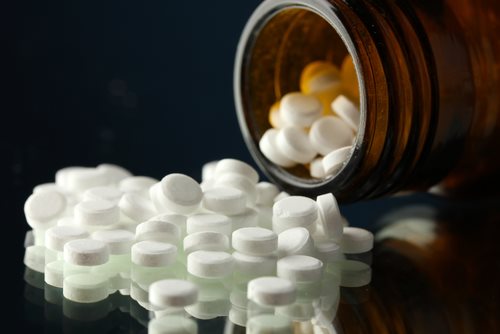
On November 7, 2012, the Department of Justice reported that two Pakistani nationals were indicted by a federal grand jury in the District of Columbia for operating websites that shipped illegal pharmaceuticals into the United States from Pakistan and the United Kingdom. The two defendants are Sheikh Waseem Ul Haq and Tahir Saeed.
The indictment shows that Ul Haq and Saeed operated and owned Waseem Enterprises and Harry’s Enterprises in Pakistan. The two men are believed to have shipped about $2 million of illegal pharmaceuticals around the world and about $780,000 to the United States.
The two defendants made U.S. customers submit payments by Western Union to people in Karachi, Pakistan so they could conceal the funds. They also told U.S. citizens that U.S. customs officials may intercept the packages as they enter the United States.
The illegal drugs include the following:
• alprazolam (labeled as Xanex)
• diazepam (labeled as Valium)
• lorazepam (labeled as Ativan)
• clonazepam (labeled as Klonapin)
• numerous types of anabolic steroids and other controlled substances
The defendants are charged with conspiring to import illegal pharmaceuticals to the United States, conspiring to distribute controlled substances, conspiracy to using misbranded pharmaceuticals, importing and distributing controlled substances, and conspiracy to commit money laundering.
The two defendants each face 20 years in prison for each count of the importing and exporting conspiracy, as well as 20 years in prison for the money laundering charge. They face more time with other charges as well.
Stuart F. Delery, Acting Assistant Attorney General for the Civil Division, stated: “This prosecution aims to curb the flow of dangerous drugs into the hands of United States citizens. The drugs allegedly sold by the defendants were not approved for distribution in the United States, were not dispensed by U.S. licensed pharmacies, and were not prescribed by any physician.”
Source: Federal Bureau of Investigation
Xarelto Approved to Treat and Reduce Blood Clots
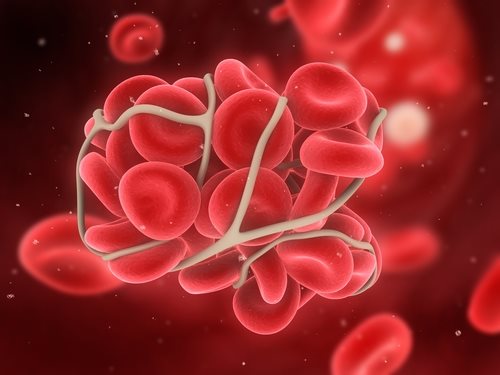
On November 2, the Food and Drug Administration (FDA) approved Xarelto (rivaroxaban) to treat deep vein thrombosis (DVT) and pulmonary embolisms (PE), as well as to reduce the risk of DVT and PE after a surgery or treatment.
DVT is a serious type of clot that occurs when blood thickens in a deep vein of the body. These types of clots are most common in the lower leg and the thigh and are extremely dangerous if they break off. They can travel to an artery in the lungs and can restrict blood flow—possibly leading to the PE which is deadly.
The drug was already approved by the FDA and used after knee and hip replacement surgeries. The drug was also used to reduce the risk of stroke in people with an irregular heartbeat called non-valvular atrial fibrillation.
Richard Pazdur, M.D., states: “Xarelto is the first oral anti-clotting drug approved to treat and reduce the recurrence of blood clots since the approval of warfarin nearly 60 years ago. Pazdur is the director of the Office of Hematology and Oncology Products at the Drug Evaluation and Research Center for the FDA.
Other drugs that are approved to reduce the risk of blood clots include the following: Lovenox (enoxaparin), generic enoxaparin, Arixtra (fondaparinux), Fragmin (dalteparin), Coumadin (warfarin), and heparin.
In clinical studies, only about 2.1 percent of patients taking Xarelto and 1.8 percent to 3 percent of patients taking enoxaparin and other combinations had a recurrent DVT or PE. A specific study showed that 1.3 percent of patients taking Xarelto had a recurrent DVT or PE compared to 7.1 percent of patients taking a placebo.
The main side effect of Xarelto is bleeding or uncontrolled bleeding. These side effects are common with anti-clotting medicine.
Source: U.S. Food and Drug Administration
Leader of Indianapolis Drug Organization Gets 10 Years

On November 7, 2012, Immigration and Customs Enforcement (ICE) announced that Agustin Lozano was sentenced to 10 years in prison for leading a drug trafficking organization that ran drugs between Mexico and Chicago. The investigation was led by ICE’s Homeland Security Investigations (HSI), the DEA, the IRS’s Criminal Investigation Division, and the Indianapolis Metro Drug Task Force.
Lozano is a Mexican national, and he was sentenced on November 6, 2012 before U.S. District Judge William T. Lawrence with the Southern District of Indiana. Lozano pleaded guilty to drug trafficking and money laundering, and he’ll be turned over to the ICE after he serves his prison sentence to face deportation.
Starting in July of 2010, undercover agents started working with Lozano. An undercover agent bought three grams of cocaine for $150 initially. It took eight months to coordinate the investigation and gather information between agencies, and 48 kilograms of cocaine were eventually confiscated on December 15, 2010. The cocaine had an estimated street value of $1.5 million. Authorities confiscated 4.4 pounds of methamphetamine as well. The methamphetamine had an estimated street value of $80,000.
Throughout the investigation, it was found that the criminal organization distributed about five pounds of methamphetamine and 10 kilos of cocaine throughout Indianapolis every month. 184 pounds of marijuana, $69,500 in cash, and 18 firearms were confiscated during the investigation as well.
U.S. Attorney Joseph H. Hogsett stated, “This sentence is an example of proactive and cooperative anti-drug police work at its finest. A drug bust of this significance occurs only once every couple of years. Let the message be heard loud and clear to all those who seek mayhem by trafficking in illegal narcotics – you will be identified, you will be investigated and you will be prosecuted to the fullest extent of the law.”
Source: U.S. Immigration and Customs Enforcement
Advair Diskus 250 50 Price

A Brief Overview of the Advair Diskus 250 50 price
Patients with respiratory conditions such as emphysema or asthma may be prescribed Advair Diskus. Although expensive, several pricing options must be considered to achieve a lower Advair 250 50 price.
Before prescribing this medication, a physician's office will contact your insurance company if you are uncertain as to whether your policy can cover part or all of the Advair Diskus 250 50 price. Depending on your policy, the total cost incurred by the Advair 250 50 price may be covered completely or up to a certain point. If you suffer from asthma, keep in mind that this drug is only indicated for short-term use. Therefore, you may be able to determine the final bill for a fixed course of treatment after learning what the Advair Diskus 250 50 price is from a trusted provider.
While patients who live in an area with multiple pharmacies may be quoted more than one Advair 250 50 price, these may not be low enough to fit their budget. Likewise, patients in rural areas may wish to shop online to locate a pharmacy which lists its Advair Diskus 250 50 price. Buying medication online is not a process to be undertaken casually. Consult with your physician to see if they are aware of any reputable online pharmacy which may list a suitable Advair 250 50 price.
No matter how low the listed Advair Diskus 250 50 price, do not purchase medication from any online pharmacy which does not require a prescription to make a sale. Websites which offer Advair 250 50 price without a prescription are not operating in accordance with the law. Because they have already demonstrated a willingness to break the law, they cannot be trusted with your credit card information.
To help decrease the Advair Diskus 250 50 price, the manufacturer is currently offering a coupon which removes $10 from every monthly purchase. This coupon to lower the Advair 250 50 price must be printed out and presented along with a prescription at a pharmacy. Additionally, at this time the manufacturer is currently offering a free 30-day trial dose to patients with a prescription. Such offers of assistance in lowering the Advair Diskus 250 50 price are constantly changing and contain many restrictions. You should also ask your doctor if they have any coupons which can lower the Advair 250 50 price.
You should be confident that you are receiving what you paid for regardless of the Advair Diskus 250 50 price. If medication you purchase turns out to be incorrectly dosed or otherwise defective, a pharmacy may be liable for damages if adverse effects ensue. Maintain receipts of any purchase recording the Advair 250 50 price paid. These will be necessary for a lawyer to determine how much compensation you should seek if litigation is likely to result in success.

